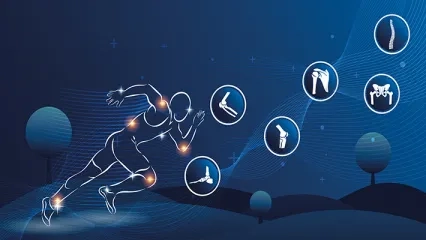Alo Yeditepe
Alo Yeditepe
What is a Stress Fracture? How to Treat Stress Fracture?
Starting sports uncontrolled after a long period of inactivity can lead to stress fractures. Orthopedics and Traumatology specialists at Yeditepe University Bağdat Caddesi Polyclinic said that weight gain along with inactivity can trigger this condition.
Stress fractures, which manifest themselves with increased pain with movement, are not caused by psychological reasons regardless of their name. The fact that the patient's complaint of pain decreases with rest can also cause the presence of an underlying problem to be ignored. Moreover, Orthopedics and Traumatology Specialists reminded that the fact that the fracture is not seen on X-rays in the early period may delay the application to the physician, and said that especially those who want to start sports in this period should be careful.
Yeditepe University Bağdat Caddesi Polyclinic Orthopedics and Traumatology specialists, who reminded that with the start of the new normal order, many people started sports both to move and to get rid of excess weight, said, "It is necessary to do sports provided that certain rules are followed. However, it is also important what kind of sports we will do."
More Prominent in Long-Distance and Long-Term Walkers
Yeditepe University Bağdat Caddesi Polyclinic Orthopedics and Traumatology Specialists said that stress fractures can frequently be encountered in the metatarsal bones of the foot and the tibia bone of the leg, especially in long-distance walkers, runners, and jumping sportsmen, and gave the following information: "Stress fracture is in the form of cracks caused by repetitive mild to moderate loads on the bone. It is different from fractures caused by sudden loads with medium or high energy. It is usually seen in athletes. Women are more affected by this fracture. In stress fractures, there is usually no change in the continuity of the bone ends and no displacement (shifting)."
Environmental Factors are also Effective in Stress Fractures
Pointing out that environmental and patient-related factors can also be effective in the formation of stress fractures, specialists said, "Among the environmental factors, the ground where sports are practiced, the type and intensity of activity, the frequency of training, the equipment used, and even the diet play a more important role." In addition, the patient's anatomy, age, gender, bone quality, presence or absence of osteoporosis, disorders in the foot structure, alignment defects in the lower extremities, and hormonal disorders, especially in women, can also play a role in the formation of stress fractures.
Fracture in the Early Stage is Not Visible on X-Ray
Stating that patients with stress fractures consult a physician with the complaint of bone pain that increases during any activity, specialists said, "This pain, which disturbs the patient, decreases with rest. However, in some cases, pain may be accompanied by swelling. However, stress fractures are not seen on X-rays in the early period. Therefore, MRI is required for early diagnosis. In MRI, edema in the bone and sometimes swelling in the soft tissue can be seen."
Treatment Differentiates Based on the Patient's Condition
According to the information provided by Orthopedics and Traumatology specialists, the treatment of stress fractures is generally conservative, that is, non-surgical. Stating that surgical treatment may sometimes be required in professional athletes and patients who have not benefited from non-surgical treatment, the specialists explained the following about the treatment approach: "First of all, activity modification and short-term immobilization are performed in the treatment. Immobilization is done with a brace or plaster according to the degree of the stress fracture. Local cold application is also effective in reducing edema in the bone. Sometimes oral vitamin D and calcium supplements are given. Patients with severe edema in the bone may also be given oral bisphosphonate treatment along with plaster treatment."
Have Vitamin D Rich Diets
Underlining that foods rich in calcium and vitamin D should be consumed to prevent stress fractures, Yeditepe University Hospital Orthopedics and Traumatology Specialists explained the following about what to do for prevention: "Regular nutrition is also extremely important. In addition, appropriate sports shoes and equipment should be worn while doing sports, speed, distance, and duration should be gradually increased weekly, and warm-up exercises should be done properly before starting sports. If your pain does not decrease with rest after sports, you should definitely consult an orthopedic specialist."
This content was prepared by Yeditepe University Hospitals Medical Editorial Board.
”
See Also
- What are Hip Joint Diseases? Causes and Treatment
- Robotic Hip Replacement Surgery
- Things to Consider When Walking in Snowy Weather
- What is Hallux Rigidus (Stiff Big Toe/Toe Arthritis)? Symptoms and Treatment
- What is Hallux Valgus (Bunion)? How is it Treated?
- What is a Bone Tumor? Bone Tumor Symptoms
- What is Crooked Leg? Can Crooked Legs Be Treated?
- Knee Pain
- Wrist Pain Causes and Treatment
- Ergonomics in Automobiles Prevents Accidents
- Don't Underestimate Bone Pain That Doesn't Make You Sleep and Doesn't Relieve With Medication
- What Causes Hip Pain? How Does Hip Pain Go Away?
- Biopsy for Bone and Soft Tissue Tumors
Alo Yeditepe




